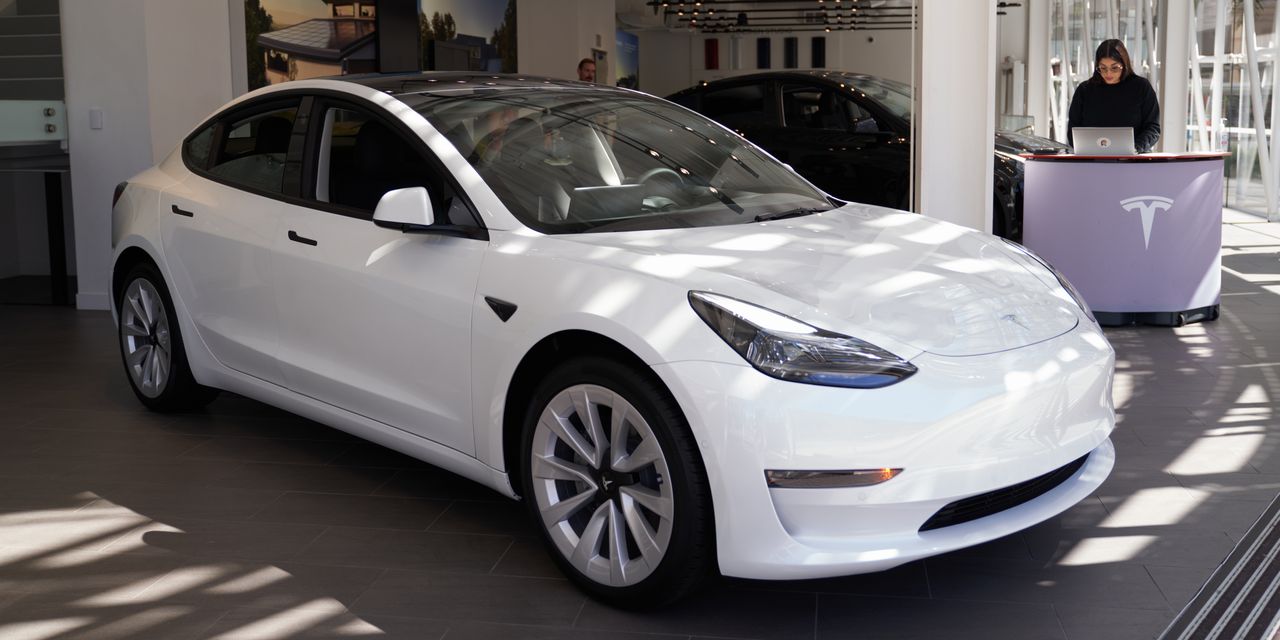Summertime is driving time and a perfect time to, once again, see if an all-electric vehicle can handle the lengthy trip to Grandma’s or Disney World.
The answer is yes, but.
EVs are making progress, however, EV road trips highlight exactly why global auto makers are rushing to sign deals with
Tesla
(ticker: TSLA), the owner and operator of the largest network of EV charging stations in America.
Tesla
trip number one for Barron’s took place in 2022 and was a 1,000-plus mile jaunt to Virginia and back in a rented, performance version Model Y. It was a piece of cake, and charging added roughly 30 minutes to one hour of total drive time. (There are always stops for necessities.)
Tesla trip number two for Barron’s took place this summer and was a 1,500-plus mile trip through New York state, Ontario, Quebec, Maine, and back home. The car was a standard-range Model 3 that gets about 270 miles per charge.
Lower range than the 2022 Model Y tested and blasting the air conditioning, which saps energy from batteries, didn’t really impact anything. Driving the Tesla EV added roughly 30 minutes to 60 minutes of incremental driving time for every 300 miles to 400 miles of driving. That’s the difference between filling up with gasoline and electricity.
Even though the range is lower, the speed of early charging is pretty good. A Tesla gets about 50 miles to 100 miles of range in the first 10 minutes or 15 minutes of charging. Three 10-minute stocks can get 300 miles of range. The charging speed slows down as the battery fills up.
And Tesla’s network of superchargers is integrated with Tesla’s navigation. Where to stop and when to stop and how long to stop are all automatic and updated as driving conditions change.
It’s pretty darn easy. One time, in New York, there was a five-minute wait because the Tesla charging station was full of Teslas.
A 400-mile drive up the Eastern U.S. coast in a Kia 6 EV wasn’t completed as easily. A seven to eight-hour trip was turned into an 11-hour trip essentially due to a lack of adequate charging infrastructure. Some EV-naiveté played a role, too.
The Kia was charged once at a Kia dealership and a grocery store for about an hour each time. That was over-charging, getting back to full, each time because of the fear of running out of energy later in the trip.
Range anxiety, which is the fear of running out of juice in the middle of nowhere, was higher with the Kia than the Tesla because of a lack of a charging network the size of Tesla’s and because there was no solid EV charging app integration. We managed the route on our own with third-party apps and phone calls to dealers.
Naiveté comes from navigation. There was a better way to manage the route. Google Maps and Waze, for instance, offer the ability to search for EV charging stations along any route. That would have cut about one or 1.5 hours off the 400-mile trip, and created less anxiety and faster navigation to the EV charging stations.
So the Kia 6 could trip could have been more efficient, but probably not quite as efficient as either Tesla trip. The network is a big reason for that.
Tesla’s huge network—it has roughly 40% to 50% of all fast charging stalls in the U.S.– is a reason
Ford Motor
(F),
General Motors
(GM), and others are adopting the Tesla charging plug. It will vastly expand the size of the fast charging network available to Ford and GM EV drivers.
Other auto makers do have their own charging networks. Some EV stations are company-owned, some are owned by dealerships, and some chargers in a network are owned by third-party operators such as
EVgo
(EVGO). And Ford, for instance, integrates its navigation with its charging network.
Ford’s BlueOval network boasts more than 84,000 plugs, more than Tesla’s network. The difference isn’t that large. Not all are fast chargers, and Tesla can use all of those, too. A Tesla can charge anywhere and at Tesla stations. Tesla drivers just don’t need to use non-Tesla EV chargers all that often.
The Tesla-auto maker EV charging deals helped Tesla stock to one of its best starts to a year. Shares gained 113% in the first half of 2023 while the
S&P 500
and
Nasdaq Composite
added about 16% and 32%, respectively. Shares have gained more than 100% in the first half of two other years, 2013 and 2020. In 2013, Tesla shares gained about 40% in the second half. In 2020, Tesla shares gained about 230% in the second half of the year.
Next up, Barron’s will have to do a road trip with a Ford EV next to see how its network and navigation app compares with the Tesla system. We’ll have to do it before 2024. That’s when Tesla superchargers will show up in Ford’s EV charging network.
Write to Al Root at [email protected]
Read the full article here













